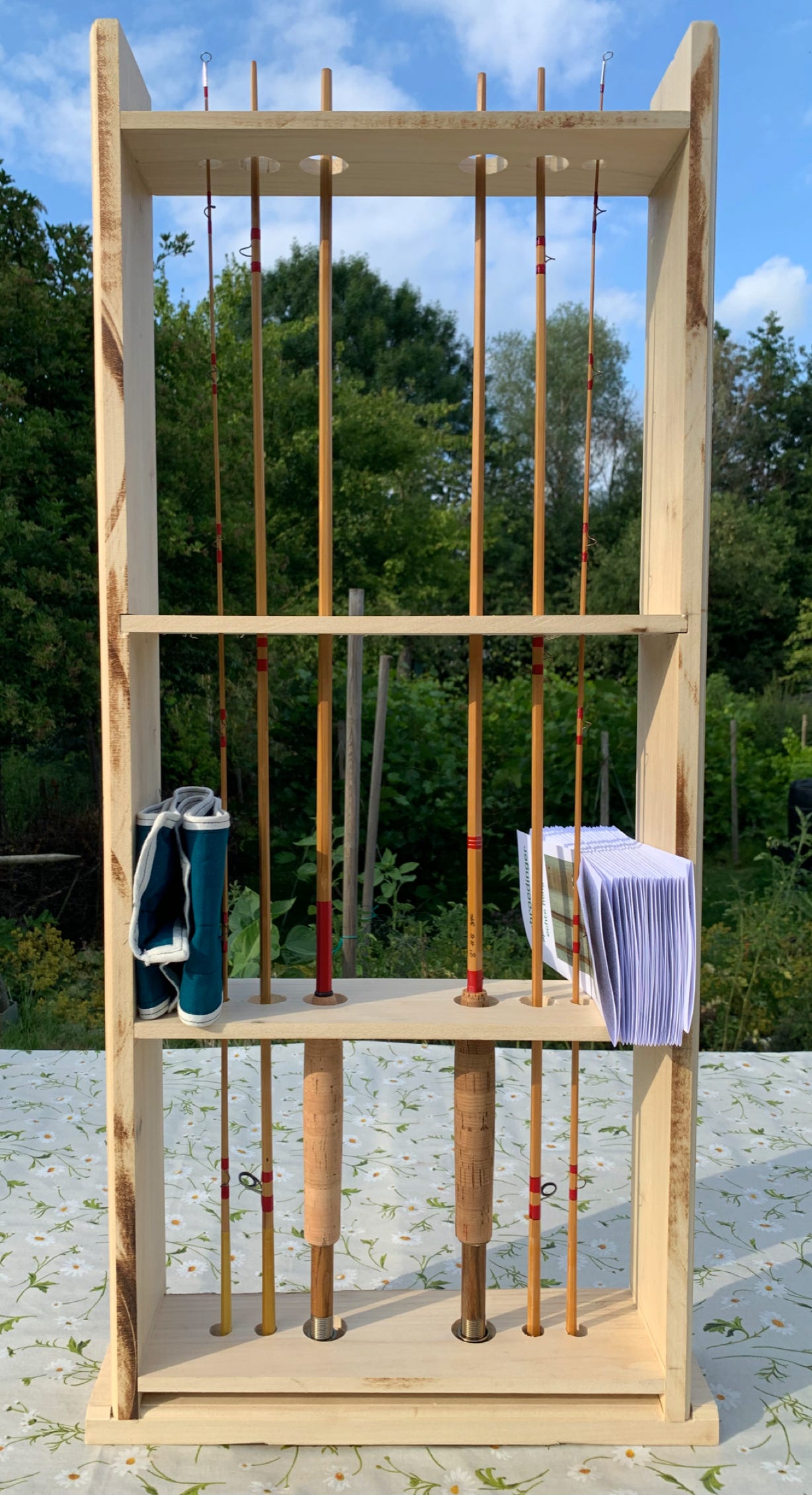I’ve been building splitcane rods since 2015, most of them based on tapers designed in-house; I’m not much into copying so-called classic tapers. Copying tapers is OK when you’e still learning the basic techniques, and also to discover why certain taper designs work the way they do, but pretty soon, your prototypes should tell you how you need to define your tapers so that they behave the way you want them to.
My signature taper, used for my PP fly rods, is a fast taper rod, very well suited to dry fly fishing as well as classical nymph fishing such as was described by Skues, Sawyer and Kite, and Leisenring. All of these advocated some sort of active sight-fishing with nymphs – Skues basically described emerger fishing to rising fish, Sawyer advocated deeper fishing to fish observed to be actively feeding on aquatic organisms, revolutionizing chalk stream fishing in the process, and Leisening focused on downstream fishing with his presentation methods based on ‘invertebrate drift’ insect behaviour. These rods are fast enough for dry fly fishing, but also have enough reserve power in their butts to easily lift a nymph and a partially sunk leader or line. In classical bamboo terms, you could call this a fast parabolic action.
I also make a few more progressive, slightly slower fly rods, the AM models. These are not necessarily based on a single taper recipe, and include a short rod for a 3-weight line for small overgrown rivers, to powerful streamer rods for pike, to saltwater models for Bonaire bonefish. And then there are the LF tapers, for spinning and casting rods, like threadline long rods for distance float fishing in Dutch polder conditions, ultralight rods like the Pezon&Michel Luxor Ultraleger clone I make, or medium and heavy lure rods for pike.
These are the most important models:
PP 754 (Geul) and PP 805 (Roer) are fast tapers (i.e. tapers with a rather steep overall profile) for a #4 (Geul) or #5/6 (Roer) line, and were developed for dry fly and shallow nymph fishing on smaller rivers in the Netherlands, Belgium (Ardennes) and the Eifel (#4), or larger rivers, such as the Glomma in Norway, for targeting large grayling (#5/6). These 7.5 and 8 foot tapers combine the best properties of bamboo with the fast character of modern composite rods. Once you’ve fished one of these tapers, you are unlikely to ever want to revert to carbon rods, and certainly not to glass…
I build these rods in 2-piece and 3-piece versions in Tonkin bamboo, as well as in 3-piece, nodeless versions in Lồ ô bamboo, in all cases with integrated bamboo ferrules, with tapers adjusted to account for the effects of the additional ferrules and the differences in modulus between Tonkin and Lồ ô.
AM 864 (G Special), a long (8’6”), somewhat slower taper for conditions where extra reach is more important than distance or high line speed. This taper was designed for a customer who was looking for a rod with better line control and mending possibilities.

LF 682 (PUL), an ultralight threadline rod inspired by the Pezon&Michel Luxor UltraLeger – actual casting weight 2 g (P&M used to claim 0.5-3 g). Built with a bamboo tip-in-butt ferrule closely resembling the action of the step-down ferrule of the original model.
LF 754 (Wurm – the Wurm is a small border stream between the Netherlands and Germany…): 7.5 ft threadlike rod for float fishing at distance, using a float carrying ca. 2.5 g.

In addition to these (and some other models) I can modify these designs at special request, to meet specific requirements.
All Schroedinger rod, barring the heavy spinning and casting rods, come with integrated bamboo ferrules, a scientifically calculated guide distribution, simple but functional reel seats or reel rings, and a cork grip with wood cone; wood grips, which have some advantages over cork, are also possible. Snake guides or other, by request. No fancy wraps. Guides are wrapped with nylon ‘A’ thread, red for fly rods, burgundy for threadline rods, and green for casting rods. The bamboo female ferrule is wrapped with undyed polyester over its entire length (scrim wrap) and varnished so it becomes transparent. This wrap is essential for the integrity of the ferrule. If it gets damaged, you should no longer use the rod, and return it for repair.
Rods as described cost € 500 for a 2 piece rod or € 600 for a 3 piece rod. Preferably no dual tip rods, as fitting two tip-over-butt female ferrules to a single male ferrule is an exercise in frustration.